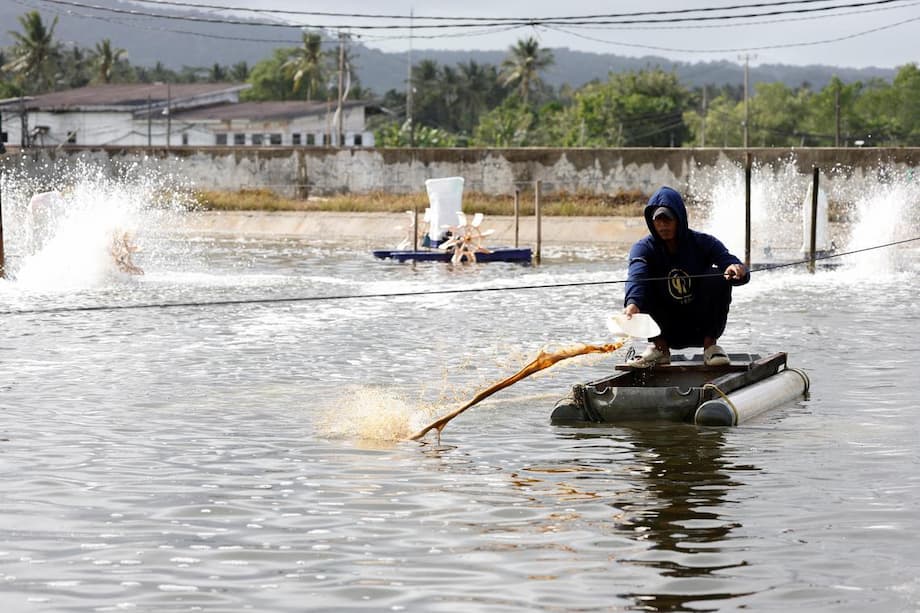Indonesia’s Shrimp Industry Faces a Turning Point After US Tariffs
Indonesia, one of the world’s largest shrimp exporters, is undergoing a dramatic shift in its seafood trade strategy after the United States imposed steep new tariffs on its shrimp exports. For years, the US has been Indonesia’s top shrimp market, accounting for a significant share of the country’s $1.68 billion shrimp export industry. But with the recent introduction of a 19 percent tariff—down from an initially threatened 32 percent—Indonesian exporters are now looking eastward, targeting China and other markets to offset the sudden loss of US demand.
- Indonesia’s Shrimp Industry Faces a Turning Point After US Tariffs
- Why Did the US Impose Tariffs on Indonesian Shrimp?
- Immediate Impact: Shrimp Orders Freeze and Expansion Plans Halt
- China: The New Frontier for Indonesian Shrimp
- Challenges in Diversifying Export Markets
- Global Shrimp Trade: Winners, Losers, and Shifting Alliances
- How Are Indonesian Exporters Responding?
- Broader Implications for Global Seafood Trade
- In Summary
At the heart of this upheaval are the livelihoods of over a million Indonesian workers, the future of a $1.7 billion industry, and the broader dynamics of global seafood trade. As Indonesian shrimp farmers and exporters scramble to adapt, the world is watching to see how this shift will reshape the seafood supply chain and international trade relationships.
Why Did the US Impose Tariffs on Indonesian Shrimp?
The US government’s decision to impose new tariffs on Indonesian shrimp is rooted in longstanding trade tensions and concerns about fair competition. In late 2023, the American Shrimp Processors Association filed trade petitions alleging that imported shrimp from countries like Indonesia, India, Vietnam, and Ecuador were being sold at unfairly low prices—a practice known as “dumping.”
The US Department of Commerce responded by launching investigations into these claims. While Indonesia was cleared of receiving significant government subsidies (which would have triggered countervailing duties), the Department found that Indonesian shrimp exporters were subject to a 6.3 percent antidumping margin. Combined with other reciprocal tariffs, the effective rate for Indonesian shrimp entering the US market rose to 19 percent in July 2025.
President Donald Trump announced the new tariffs as part of a broader trade policy aimed at protecting US industries and ensuring fair trade practices. In exchange for the lower 19 percent rate (down from the initially proposed 32 percent), Indonesia agreed to reduce barriers for US goods and make substantial purchases of American energy and agricultural products.
Immediate Impact: Shrimp Orders Freeze and Expansion Plans Halt
The effects of the new tariffs were immediate and severe for Indonesian shrimp farmers and exporters. Denny Leonardo, who operates a 150-pond shrimp farm in Java, had planned to expand his operations by adding 100 new ponds in 2025. However, as US orders dried up following the tariff threats, he was forced to reconsider his investment plans.
“I am optimistic that my company could survive because there will still be supply and demand. But for growth, I am not that optimistic,” Leonardo told reporters, reflecting the cautious mood among many in the industry.
According to Andi Tamsil, head of Indonesia’s shrimp farmers’ association, the 19 percent tariff could cause shrimp exports to the US to drop by as much as 30 percent in 2025. This would threaten the livelihoods of up to one million workers across Indonesia’s labor-intensive shrimp sector.
Most US buyers have put their orders on hold, waiting to see how prices and trade policies evolve. The new tariff also puts Indonesia at a disadvantage compared to competitors like Ecuador, which faces a lower 15 percent tariff on its shrimp exports to the US.
China: The New Frontier for Indonesian Shrimp
With the US market suddenly less accessible, Indonesian exporters are turning their attention to China—the world’s largest shrimp importer by volume. Historically, China has accounted for only about 2 percent of Indonesia’s shrimp exports, as Indonesian producers preferred the higher prices offered by US buyers. But with the new tariffs in place, China’s vast market has become an attractive alternative.
In June 2025, a delegation of Indonesian industry representatives, led by Andi Tamsil, visited Guangzhou to meet with Chinese importers, restaurant owners, and agri-commerce platforms. More trips are planned as Indonesia ramps up its promotional efforts in China.
“Imagine if we could take just 20 percent of China’s import market,” Tamsil said, referencing China’s annual imports of around one million tonnes of shrimp. “That would be a massive boost for us.”
China’s appetite for seafood is enormous, and its import market is highly competitive. Indonesian exporters hope to carve out a larger share by emphasizing quality, sustainability, and reliability. However, they face stiff competition from established suppliers like Ecuador and India, who have already built strong relationships with Chinese buyers.
Challenges in Diversifying Export Markets
While China represents a significant opportunity, Indonesia is also seeking to diversify its shrimp exports to other regions. Budhi Wibowo, head of Indonesia’s seafood business association, has highlighted the potential for growth in the Middle East, South Korea, Taiwan, and the European Union. A free trade agreement with Brussels is reportedly nearing completion, which could open new long-term opportunities for Indonesian seafood in the EU market.
According to Indonesia’s Ministry of Marine Affairs and Fisheries, the country exported $5.95 billion in fishery products in 2024, with the US, China, ASEAN countries, Japan, and the EU as top destinations. Shrimp accounted for $1.68 billion, or 28.2 percent, of total fishery exports. Other key commodities included tuna, squid, crabs, and seaweed.
Several of these products saw notable export growth in 2024, especially lobster (up 283.58 percent), driven by surging demand in China and Vietnam. This demonstrates Indonesia’s ability to pivot and capitalize on new market trends, but the scale of the US shrimp market means that replacing lost sales will be a formidable challenge.
Global Shrimp Trade: Winners, Losers, and Shifting Alliances
The US tariffs on Indonesian shrimp are part of a broader realignment in global seafood trade. According to industry analysts, the structure of US tariffs has already shifted import patterns, favoring countries with lower or no tariffs. For example, after the US imposed a 25 percent tariff on Chinese shrimp in 2018, imports from China plummeted, while Ecuador and India gained market share thanks to lower duties.
A recent analysis by Shrimp Insights shows that Vietnam now faces the highest total tariff on shrimp exports to the US (74.6 percent), followed by Sri Lanka, Bangladesh, Thailand, Indonesia (35.9 percent), and India (34.26 percent). Ecuador, by contrast, faces a much lower tariff of 13.78 percent, giving it a competitive edge in the US market.
For Indonesia, the combination of high production costs, new US tariffs, and fierce competition from Ecuador and India makes the road ahead challenging. Developing domestic markets and building new export relationships will take time and investment. Meanwhile, US domestic shrimp producers may see a modest boost in market share, but are unlikely to replace the volume of imports due to production constraints.
How Are Indonesian Exporters Responding?
Indonesian shrimp companies are taking a multi-pronged approach to weather the storm:
- Promoting products in China: Industry delegations are actively courting Chinese buyers and restaurant chains, hoping to increase Indonesia’s share of the world’s largest shrimp market.
- Exploring new markets: Efforts are underway to expand exports to Japan, South Korea, the Middle East, Taiwan, and the EU, with a focus on both raw and value-added seafood products.
- Improving quality and sustainability: The government and industry groups are working to upgrade production standards to meet the requirements of international buyers, especially in the EU and China.
- Advocacy and negotiation: Indonesian officials are engaging with US authorities to argue against the dumping determination and seek more favorable trade terms in the future.
Despite these efforts, the outlook remains cautious. Many exporters have scaled back investment plans, and some are reducing raw material prices to stay competitive. The process of finding new buyers and building trust in unfamiliar markets is slow and uncertain.
Broader Implications for Global Seafood Trade
The Indonesian shrimp saga is a microcosm of larger trends in global trade. As countries impose tariffs and adjust trade policies to protect domestic industries, supply chains are forced to adapt. For shrimp, a commodity with a complex web of producers and consumers across Asia, the Americas, and Europe, these shifts can have far-reaching consequences.
For US consumers, higher tariffs on imported shrimp could mean higher prices at the grocery store and in restaurants. If prices rise significantly, some consumers may switch to other proteins, affecting overall demand. For producers in countries like Ecuador and India, the opportunity to fill the gap left by Indonesia could lead to increased investment and expansion.
Meanwhile, Indonesia’s experience highlights the risks of overreliance on a single export market. By diversifying its customer base and investing in quality and sustainability, Indonesia hopes to build a more resilient seafood industry for the future.
In Summary
- The US imposed a 19 percent tariff on Indonesian shrimp in July 2025, disrupting Indonesia’s largest export market.
- Indonesian shrimp exports to the US could drop by up to 30 percent, threatening one million jobs.
- Indonesia is shifting its focus to China, the world’s largest shrimp importer, and exploring other markets like the EU, Japan, and the Middle East.
- Competition from Ecuador and India, which face lower US tariffs, poses a challenge for Indonesian exporters.
- The shift reflects broader changes in global seafood trade, with countries adapting to new tariffs and seeking to diversify their export destinations.
- Indonesian industry leaders remain cautiously optimistic about survival, but expect slower growth and a challenging transition period.












